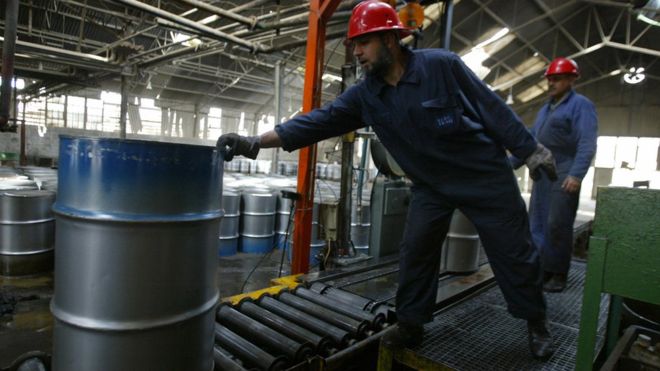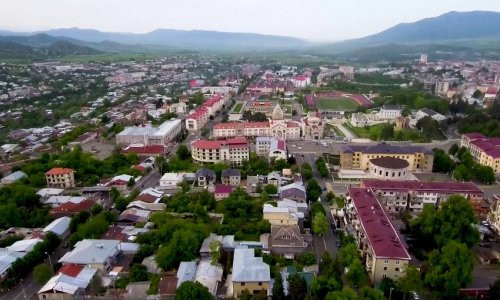After a painful 18-month-long decline, have oil prices finally bottomed out? Glad you asked. Yes they have.
At least, that’s the unqualified, confidently forthright prediction of Maison Placements Canada energy analyst Josef Schachter.
Skeptical? You’re not alone. Most forecasters have been dead wrong since the price of benchmark grade U.S. light crude began its long, tortuous slide from a peak of $107 US a barrel in mid-2014 to a recent low of less than $35.
Some predicted prices would bottom out at $80, then $60, then $50. Eventually, most analysts simply gave up trying to call a bottom, arguing that Saudi Arabia’s new-found unwillingness to curb output has fundamentally changed the game.
Iran’s pending return to global markets has also complicated matters.
As a result, they’ve grown wary of making bold predictions. But not Schachter. He’s convinced that prices have finally hit bottom and are poised to begin a long, slow climb in 2016 and beyond.
That’s despite another pullback Monday, when the price of West Texas Intermediate (WTI), the benchmark grade of U.S. light crude, dipped $1.29 a barrel to close at $36.81 on the New York Mercantile Exchange.
"I’m looking for a tepid recovery, with WTI being rangebound between $38 and $48 a barrel from the first quarter through the third quarter of 2016,” Schachter says. "That will not be sufficient for the industry to do well, but they’ll survive, barely.”
Grizzled oilpatch veterans often say that the best cure for low oil prices is low oil prices. As Schachter sees it, those low prices will really start to bite by the second quarter. Cash-strapped U.S. shale oil producers are simply running out of ways to sustain output.
From an April 2015 high of 9.6 million barrels per day, he says U.S. production — now down to about 9.2 million b/d — is set to sink further, to perhaps 8.8 million b/d, by the end of the first half. And that will set the stage for bloated U.S. inventory levels to fall and for oil prices to rise further by the fourth quarter, he argues.
"I think we’ll have a chance in the fourth quarter for pricing into the $50s and maybe even into the $60s range,” he says. "And in the winter of 2016-2017, I think we’ll go over $60 and we might get to $70. My earliest forecast for $100 oil would be the winter of 2018-2019.”
That translates to an average oil price of about $48.50 a barrel for 2016, he says. In other words, barring a "black swan” event — such as a terrorist attack on Saudi Arabia’s major energy infrastructure — Schachter expects no quick return to triple-digit oil prices.
But if he’s right, at least the worst is now over, as 2015 draws to a merciful close.
Clearly, much damage has already been done. Alberta’s economy has been flattened, roughly 100,000 direct and indirect industry jobs have been lost, says the Canadian Association of Petroleum Producers or CAPP, and tens of billions of dollars of capital investment have been cancelled.
Without new oil pipelines, those investment dollars may never return, and Alberta’s economy may never fully recover. But at least, there is now a glimmer of hope that the bleeding is about to stop.
As for the odds of oil prices plunging anew (some U.S. analysts say oil could dip to just $20 a barrel), Schachter dismisses that "a very small possibility” at best.
So why should you care what Schachter thinks? What makes his views any more credible than those of other analysts?
Well, consider this. Unlike most of his peers, Schachter was one of the few analysts who saw trouble looming as far back as March 2014, when WTI was trading north of $100 a barrel and still trending higher.
With U.S. production soaring and inventories growing, Schachter broke ranks with his peers and turned bearish. And he remained bearish until last week, when oil prices briefly dipped below $35 a barrel — as he predicted — before staging a pre-Christmas rally.
Analysts cited a larger-than-expected drop in U.S. inventories for the initial price spurt, followed by a wave of short covering. Light trading volumes also helped. In any case, Schachter is convinced that the lows have been seen for this cycle.
Of course, many questions remain. With a global oil surplus still estimated at between one and two million barrels per day, a milder than expected winter could curb demand and delay the recovery process. So could a further slowdown in China’s economy.
Saudi Arabia also has a bit of spare production capacity remaining. Although it is now running a massive budget deficit due to low oil prices, it could continue to inflict pain on competitors by increasing production.
But if the energy industry was overly optimistic about oil prices 18 months ago, it seems to me that the pendulum has now swung too far the other way and pessimism has reached excessive levels. As 2016 dawns, I’m clinging to that thought.
www.ann.az
Follow us !











